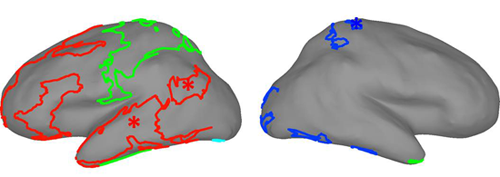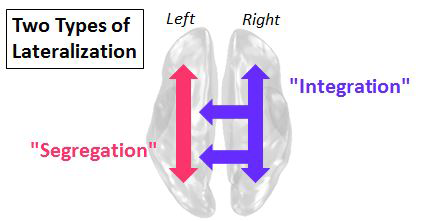Archived Content
The National Institute of Mental Health archives materials that are over 4 years old and no longer being updated. The content on this page is provided for historical reference purposes only and may not reflect current knowledge or information.
The More Hemispheric Lateralization, the Better Thinking Performance
• Science Update

By examining activity of the living human brain at rest via fMRI, NIMH intramural scientists have discovered a secret to how it enhances thinking ability. It turns out that left brain regions are biased to talk more to each other, while right brain regions talk more evenly with both hemispheres. These biases are most pronounced in brain regions associated with the specialized functions of the two hemispheres – e.g., language and motor control on the left and visual/spatial attention on the right. Such lateralization is associated with enhanced cognition, say Drs. Stephen Gotts, Hang Joon Jo, Alex Martin, and colleagues of the NIMH Laboratory of Brain and Cognition. The more such lateral specialization subjects showed at rest, the better they performed on verbal and spatial tasks later.
For more information, see PNAS Blog: Brain Halves Interact Differently with Each Other

Reference
Two distinct forms of functional lateralization in the human brain. Gotts SJ, Jo HJ, Wallace GL, Saad ZS, Cox RW, Martin A. Proc Natl Acad Sci U S A. 2013 Aug 19. [Epub ahead of print] PMID: 23959883
